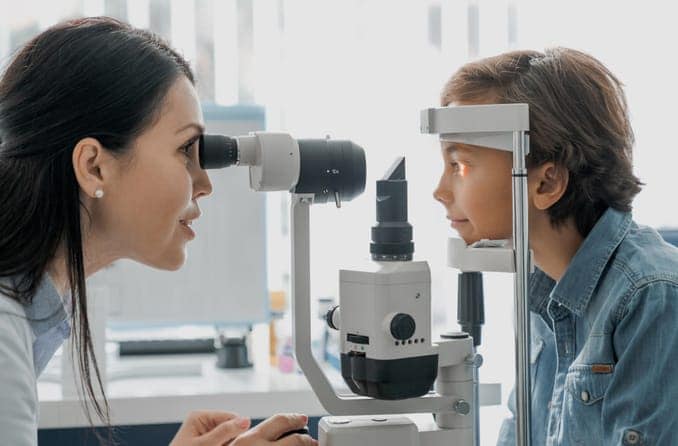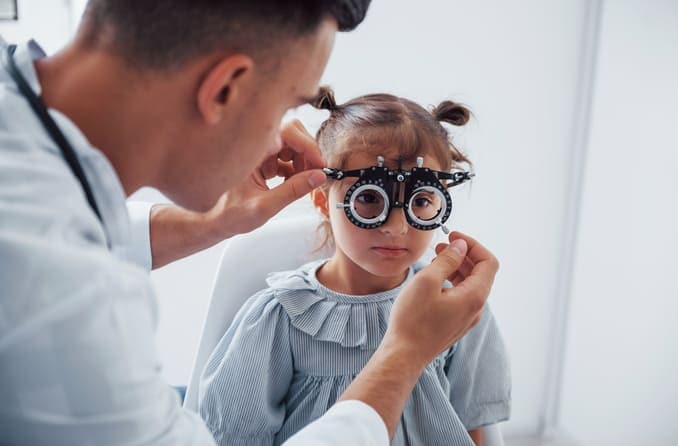Other common childhood eye conditions
Color blindness
There are two primary kinds of color blindness, or, perhaps more accurately, color vision deficiency: red-green and blue-yellow. Both types come in multiple forms. The most common form, deuteranomaly, is a kind of red-green color blindness that causes green colors to appear more red.
Males are significantly more likely to be red-green colorblind than females. According to MedlinePlus, a service of the National Library of Medicine, red-green color vision deficiency affects about 1 in every 12 males, but only 1 in 200 females. Blue-yellow color vision deficiency is much more rare — 1 in every 10,000 people — and shows up equally across both genders.
In very rare cases, a person can be completely colorblind. This is called monochromacy.
Convergence insufficiency
Convergence insufficiency occurs when the eyes can’t focus properly on near objects. When a child tries to focus on something close to their eyes, one eye will turn slightly outward instead of turning inward.
Around 2% to 8% of children and young adults have some level of convergence insufficiency, according to a study published in the journal Ophthalmology.
Children with this deficiency tend to show the most discomfort with near-distance activities like using a book, computer, smartphone or TV, according to the National Eye Institute.
This can lead to difficulty reading and concentrating. For this reason, convergence insufficiency is sometimes misdiagnosed as ADHD, but it can also occur alongside ADHD.
READ MORE: Suspect ADHD? Try an eye exam first










